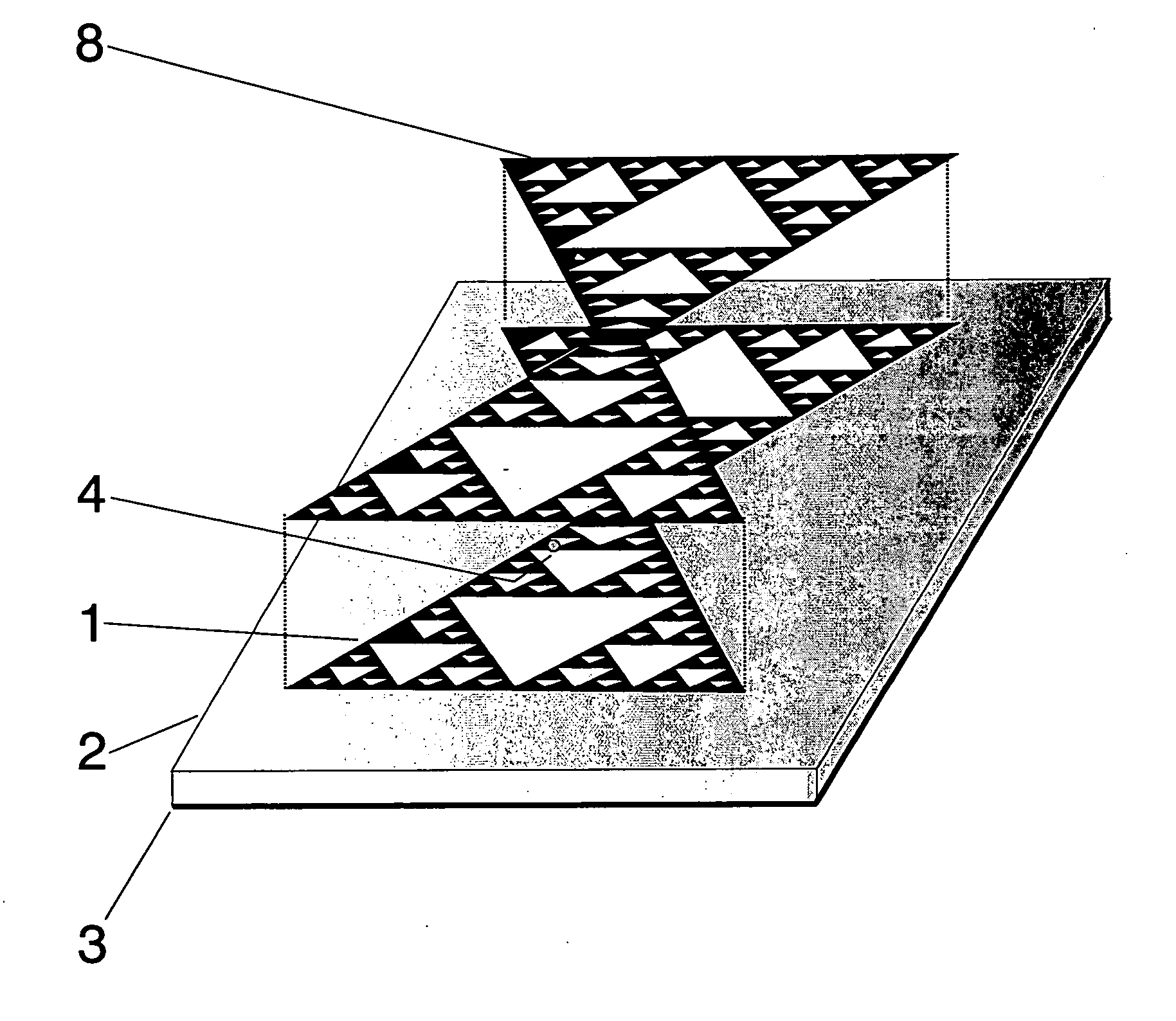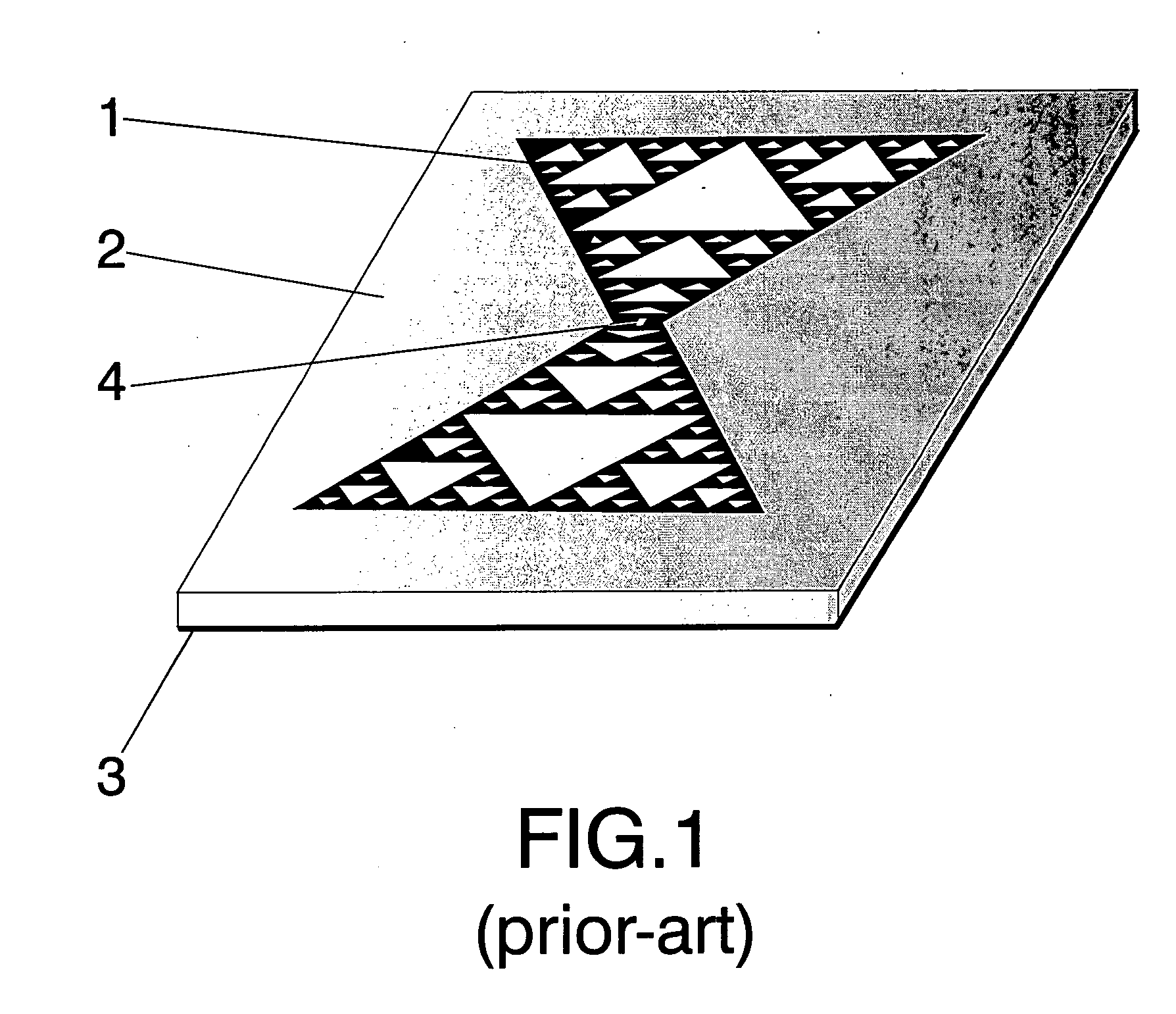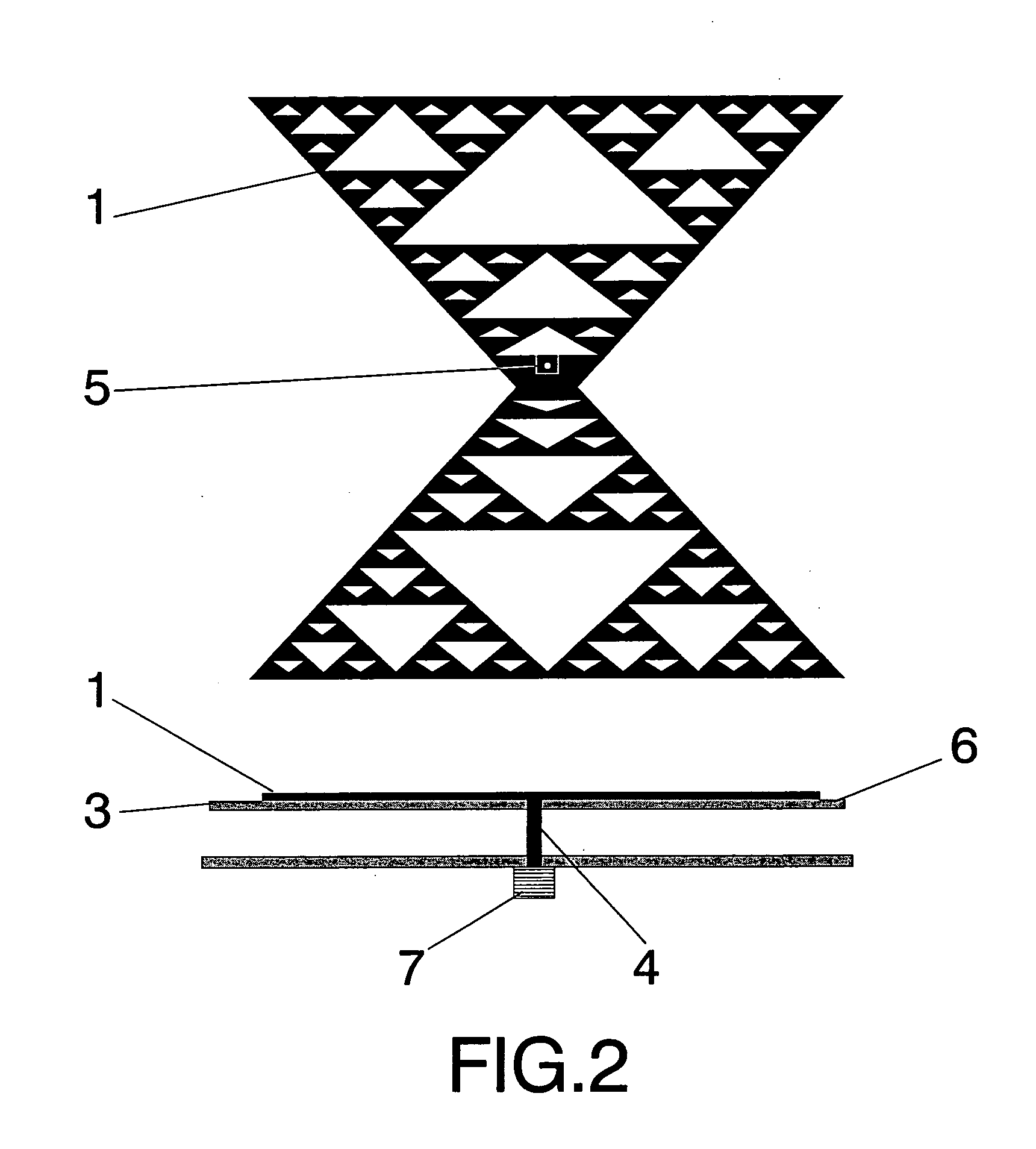Undersampled microstrip array using multilevel and space-filling shaped elements
a microstrip array and array technology, applied in the field of undersampled microstrip arrays using multilevel and space-filling shaped elements, can solve the problems of large space needed for the feeding network, significant integration problem, complex feeding network to feed the large number of elements, etc., to achieve the reduction of the number of t-junctions and bends, the effect of reducing the number of coupling between elements and reducing the number of radiation pattems or beam-steering
- Summary
- Abstract
- Description
- Claims
- Application Information
AI Technical Summary
Benefits of technology
Problems solved by technology
Method used
Image
Examples
Embodiment Construction
[0023]FIG. 1 shows an example of a the basic radiating multilevel element (1) that achieves a broadside radiation pattern with a higher directivity than that of a classical Euclidean patch operating at the same frequency (squares, circular-shaped, etc). The patch can be, for instance, printed over a dielectric substrate (2) or can be, for instance, conformed through a laser process. Any of the well-known printed circuit fabrication techniques can be applied to pattern the multilevel or space-filling element over the dielectric substrate. Said dielectric substrate can be, for instance, a glass-fibre board, a teflon based substrate (such as Cuclad®) or other standard radiofrequency and microwave substrates (as for instance Rogers 4003® or Kapton®). The behaviour of the antenna represented in FIG. 1 has been already published in [J. Anguera, C. Puente, C. Borja, R. Montero, J. Soler, “Small and High Directivity Bowtie Patch Antenna based on the Sierpinski Fractal”, Microwave and Optica...
PUM
 Login to View More
Login to View More Abstract
Description
Claims
Application Information
 Login to View More
Login to View More - R&D
- Intellectual Property
- Life Sciences
- Materials
- Tech Scout
- Unparalleled Data Quality
- Higher Quality Content
- 60% Fewer Hallucinations
Browse by: Latest US Patents, China's latest patents, Technical Efficacy Thesaurus, Application Domain, Technology Topic, Popular Technical Reports.
© 2025 PatSnap. All rights reserved.Legal|Privacy policy|Modern Slavery Act Transparency Statement|Sitemap|About US| Contact US: help@patsnap.com



